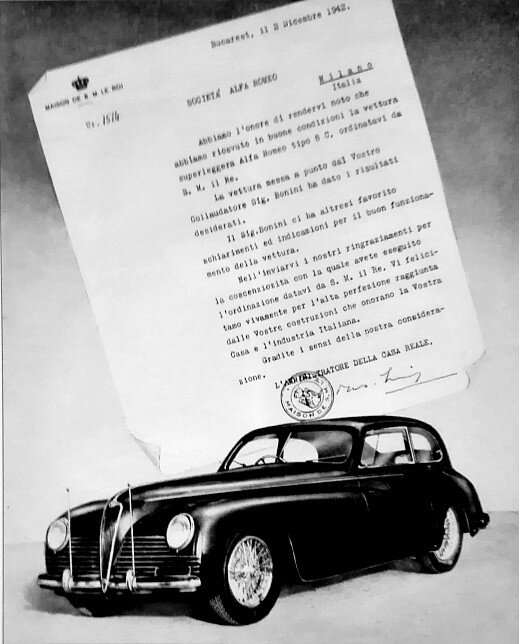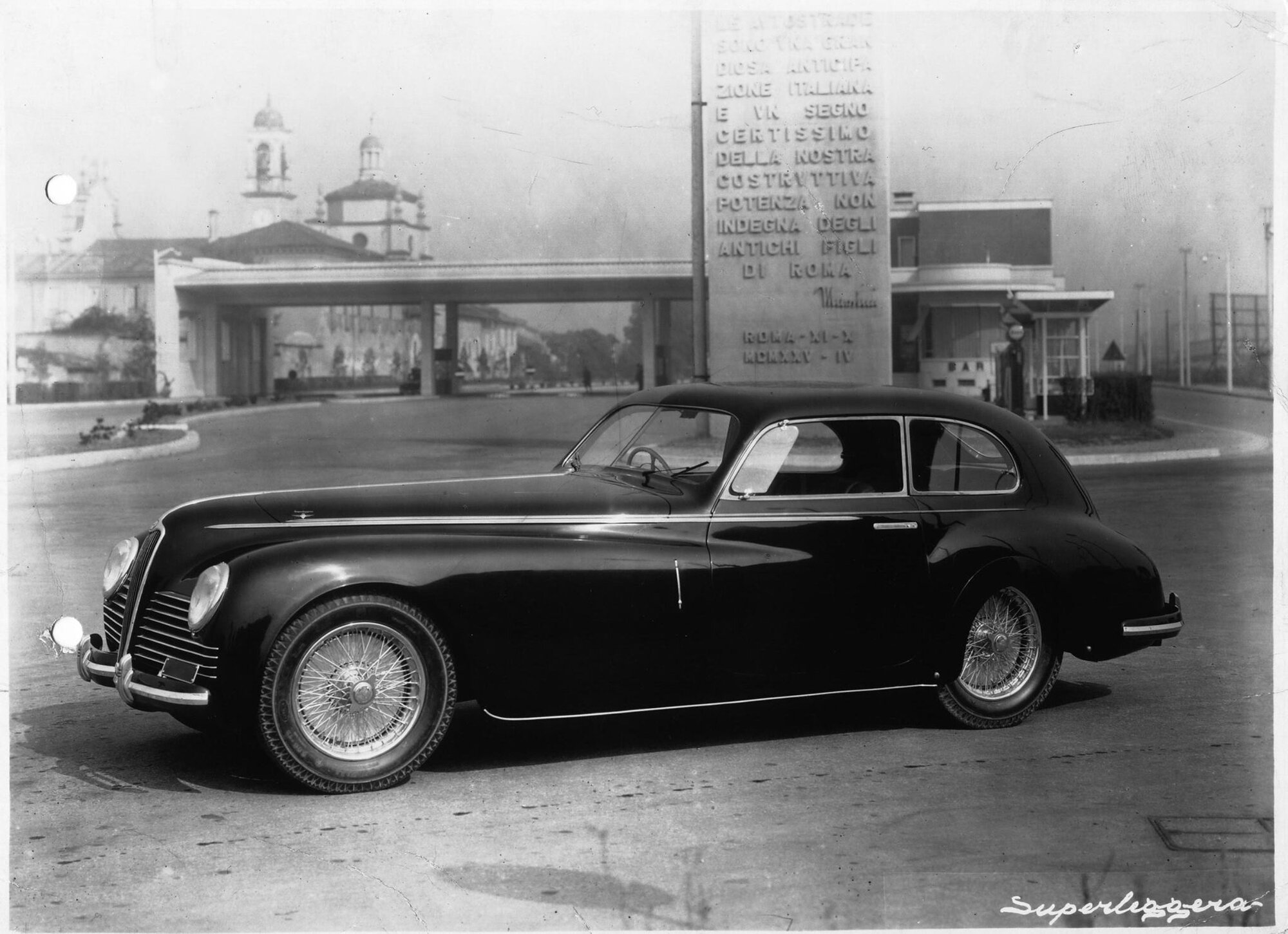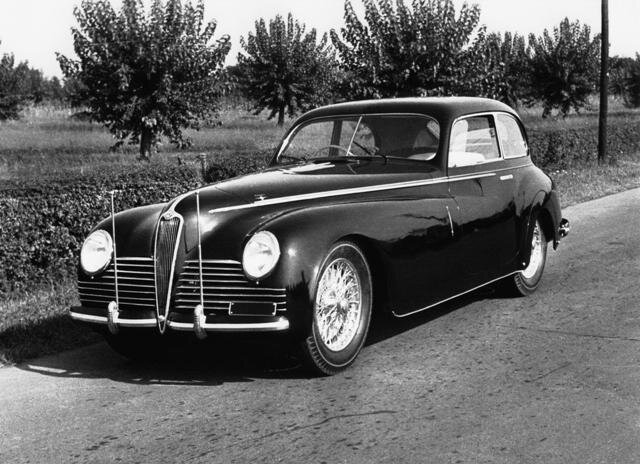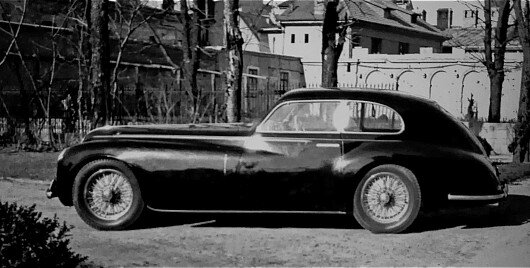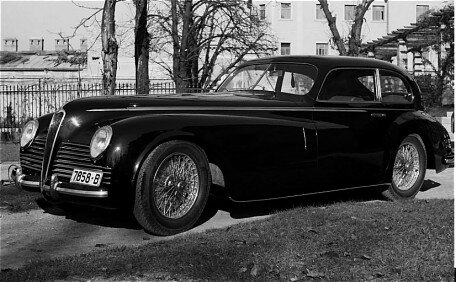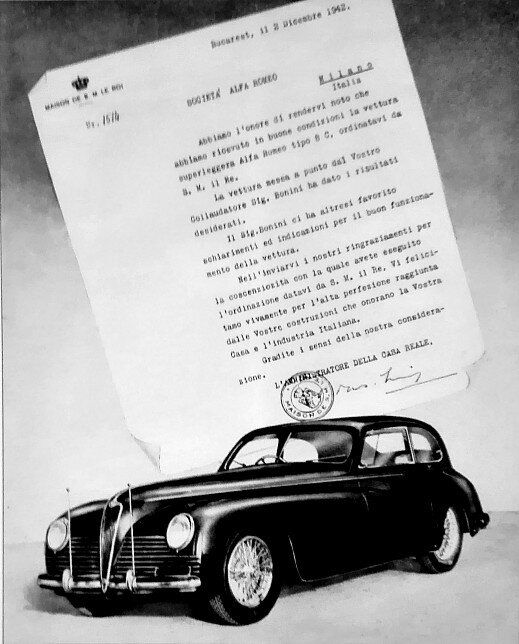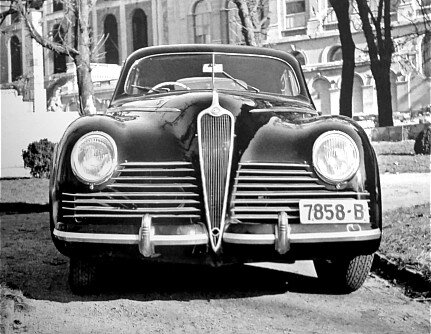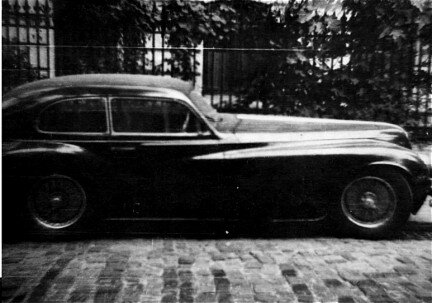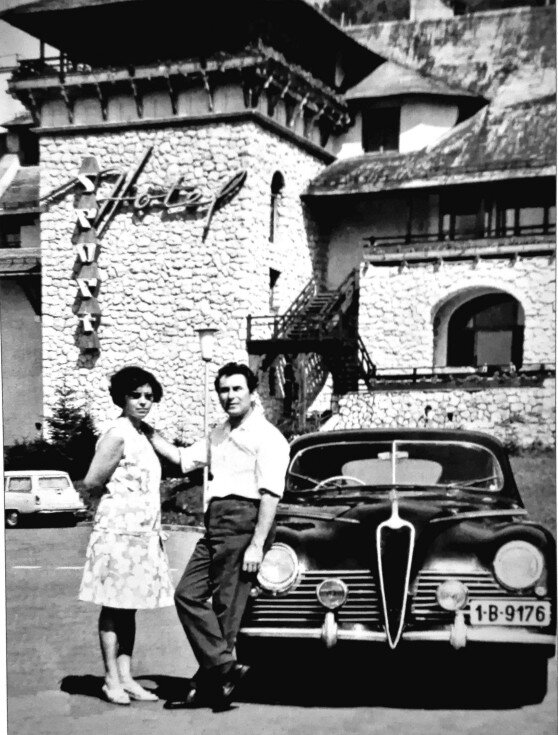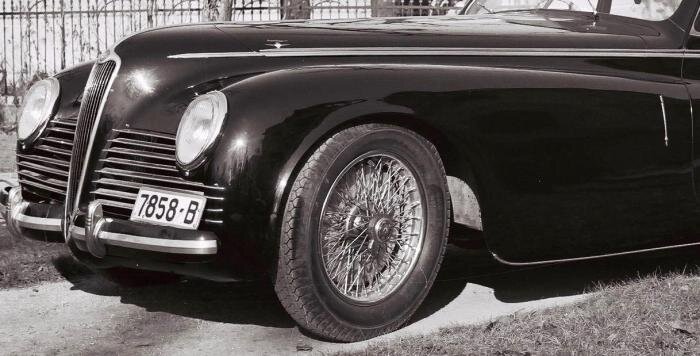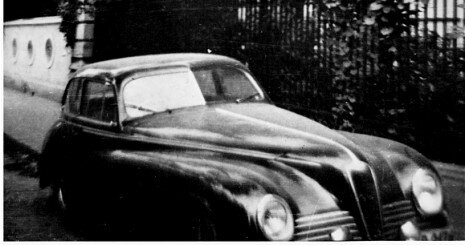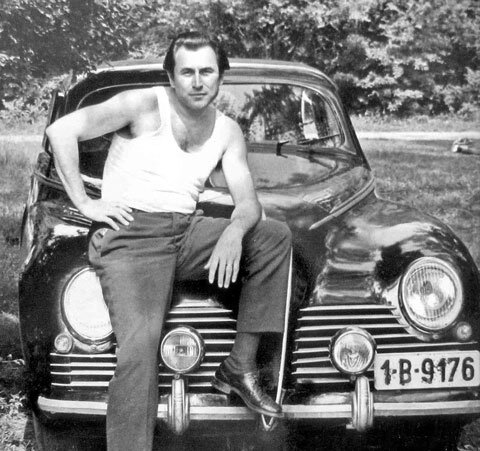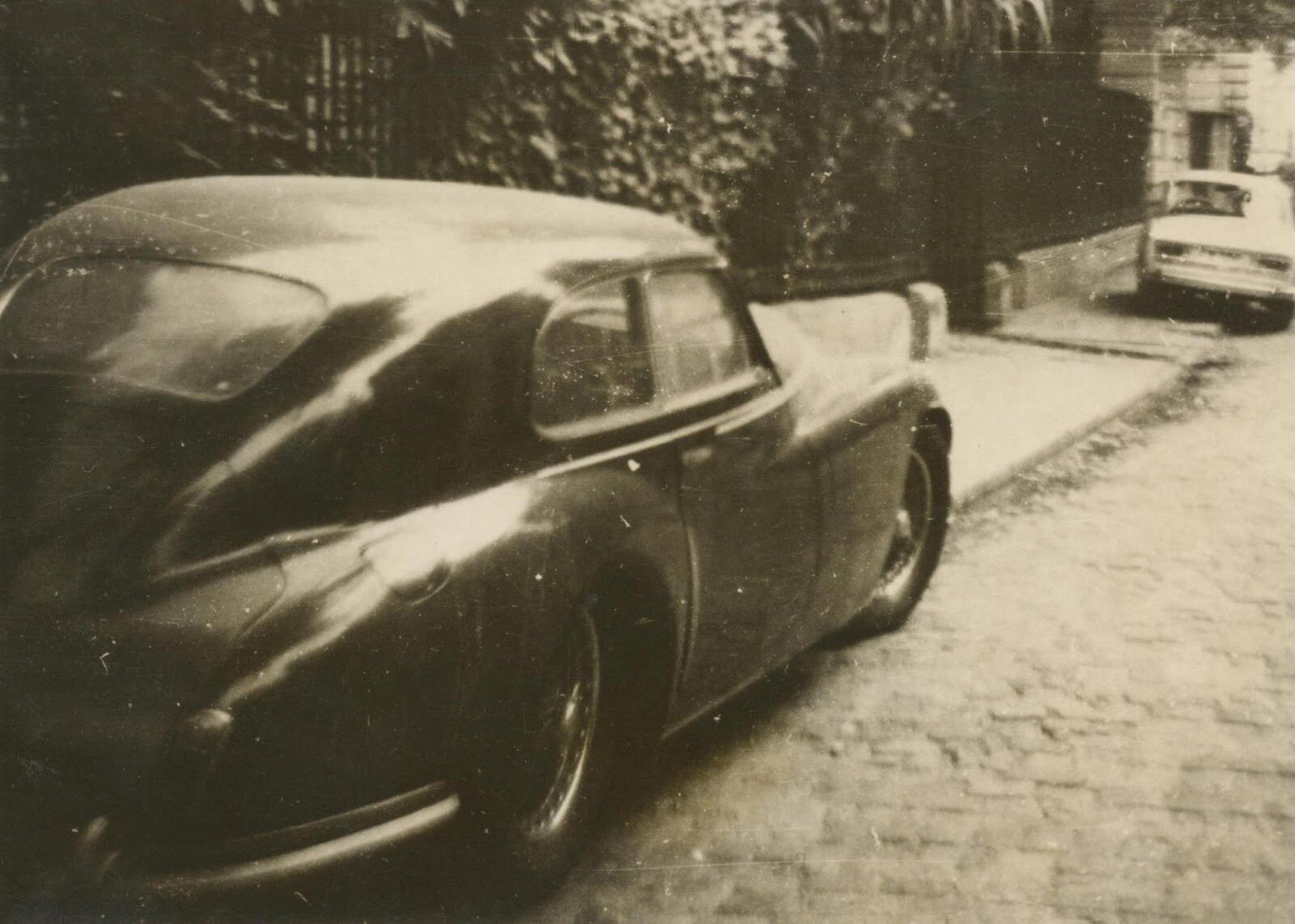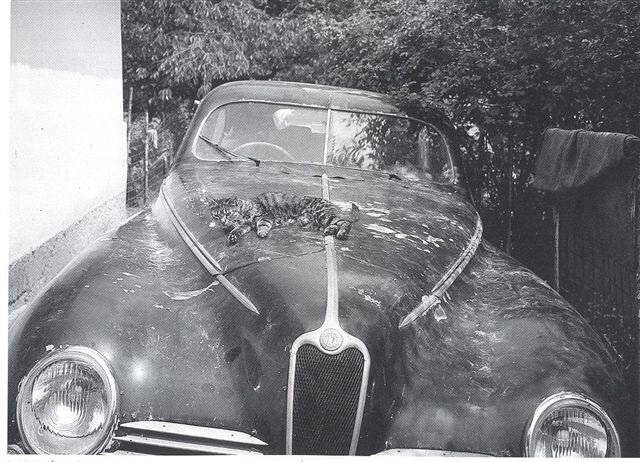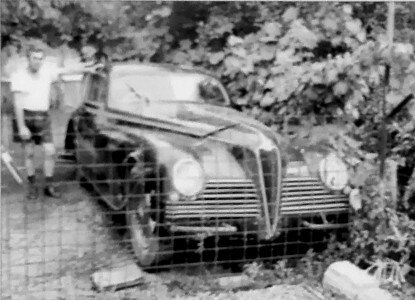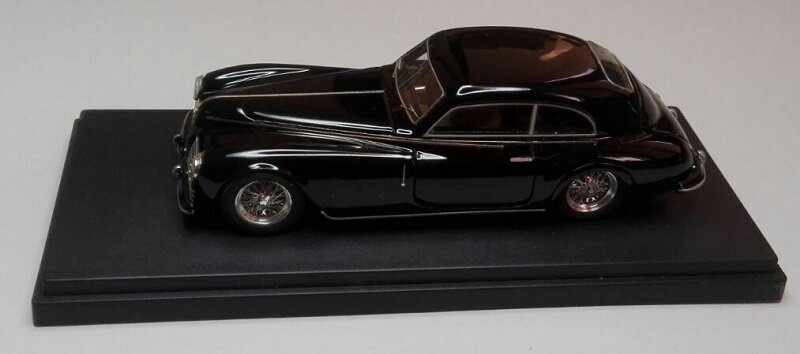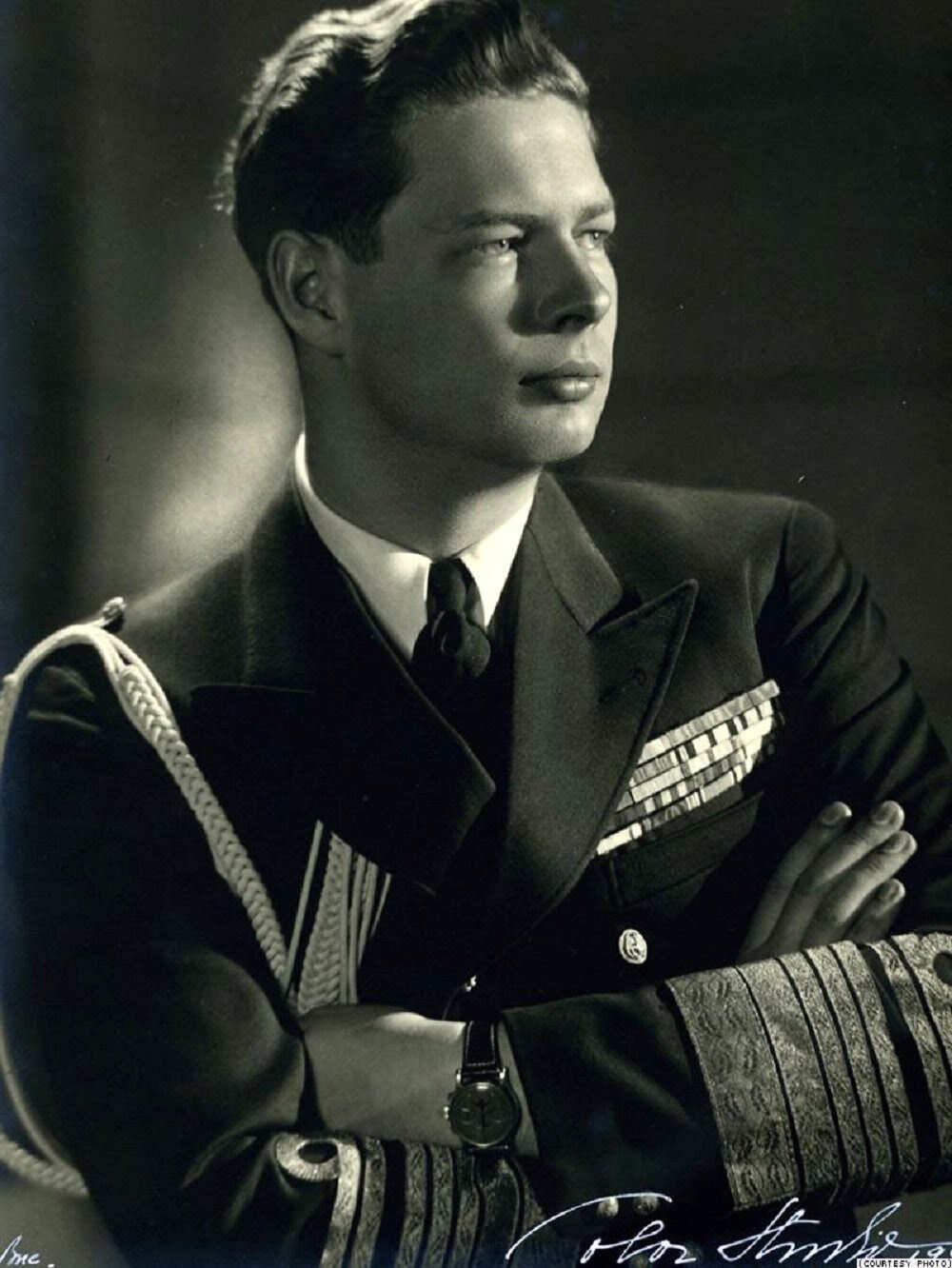ALFA ROMEO 8C 2900B LUNGO - A CAR FIT FOR A KING
It was somewhere in the early 1940s that the young King Michael I of Romania visited Italy with his mother, Princess Helen. He had just met Hitler in Berlin and continued his trip South in order to see Mussolini as well. Under the de facto military command of Marshal Antonescu, King Michael’s Romania had entered the war on the Axis side. But while he was in Italy with state affairs, young and passionate about automobiles as he was, King Michael took a break from his official duties in order to visit what was at the time the jewel in the Italian industry crown, the Alfa Romeo factory in Portello.
It was there that he would take for a drive test (under the guidance of none other than Wilfredo Ricard, Alfa’s Chief Engineer for Special Projects) the Alfa Romeo 8C 2900B Spider Corsa Sperimentale “Balena”. It wasn’t his first contact with automobiles, he was something of what we might call today a petrolhead, with gasoline well infused in his blue blood: his uncle Nicholas had raced twice in Le Mans driving a Duesenberg, and according to some reports his father Carol II had owned as well a beautiful 6C 2500. After concluding what must have been a very spirited drive test, he became convinced of Alfa Romeo’s merits to the point that he wanted one commissioned for himself. The Portello factory had been under state ownership since 1933, and when World War 2 erupted all of its products were destined to contribute to the war effort. Mussolini had however given Alfa Romeo permission (or instruction) to build a few dozens “civilian” cars, some of them for German officials, great admirers of the Milanese firm. All in all, during the war years, 28 “civilian” cars were built.
The chassis used for King Michael’s car was to be the long version of the 2900B he had driven, with the same masterpiece of a supercharged 8 cylinders in line engine signed by Vittorio Jano, bodied in a two-door berlina shape by Carrozzeria Touring Superleggera. The result was an Alfa with a very innovative line – still conceptually linked to the other previous Touring berlinettas, but anticipating the post-war Alfas by presenting the narrow heart shaped scudetto. This characteristic design feature will be further revised in the various 6C 2500 exemples of the 40s, and will find its definitive consecration with the 1900 model of the ’50s, remaining an Alfa Romeo design trade mark to this day. So even if it was a one-off custom build, we can definitely say it was fundamental in the evolution of the brand image. Even thought it was built on the Lungo chassis, it’s passenger compartment was further enlarged, in order to accommodate the King’s companions. As sizeable as the car was, Touring had accomplished a streamlined and elegant profile. The paintwork was deep black, matched by a maroon fabric interior with leather inserts of a lighter shade, while the levers and dashboard buttons were made from amber. The body was aluminium and all glassware except windshield was plexiglass, in true Superleggera spirit. It even had its suspension arms and steering linkage chromed (details confirmed by Simon Moore in his book “The immortal 2.9”, a priceless source of information). It was also intended to be a parade car – in some of the first official photos one can notice the flag holders, but this setup was removed before delivery. It was truly a car fit for a king, in a time when Alfa represented the pinnacle of mechanical engineering, a time when Alfa had no rival on the market and a when a certain Enzo Ferrari was nothing but a disgruntled ex-Alfa employee.
The Alfa Romeo 2900B Lungo, chassis number 412.039 was delivered by train to Romania in 1942. There are no public records or photographs showing the King together with his car, but he must have been pretty satisfied with his acquisition as to write a letter to the managers of the factory congratulating them for “the highest perfection achieved by your products that honor your House and the Italian industry” and also thanking for “having received in good condition the 8C 2900 car and for the excellent set-up by your test driver Bonini who also provided us with clarifications and indications for the proper function of the automobile”. The world was in turmoil though and history was crushing everything in its path. As satisfied as he was with the car, he didn’t had the chance to enjoy it too much. In 1944, still only 23 years old, he decided he wasn’t going to be just a figurehead king anymore, watching his country being destroyed, so he organised a coup against Marshal Antonescu, breaking the alliance with Hitler’s Germany. Some historians argue that this coup alone may have shortened World War II by 6 to 8 months, saving hundreds of thousands of lives in the process. The war had already entered its final phase, it was the 23rd of August 1944, and perhaps for the Allies it was still too little, too late. His move was acclaimed by all Allied Forces, but his country’s fate was elsewhere decided. After the war ended the King was forced to abdicate and leave the country. Over Romania had started to blow a harsh wind coming from the East…
In 1945 the car was sold, with only 2198 km on the odometer, thereafter changing ownership three more times, and somehow miraculously escaping being taken to Moscow as a war reparation, as it had happened to some other special, precious cars in the country. The second owner “managed” to break the engine and subsequently sent it to Alfa Romeo for repairs. The 2900B continued its life as an ordinary car, apparently powered by a Mercedes engine. For the next 20 years informations about the car’s misadventures and owners are missing, except for a brief apparition as a prop in the 1958 movie “The Mist Is Lifting” (min. 27:40). The trail will be picked up again in 1966, when a certain Mr. Ion Croitoru from Bucharest will buy the 2900B Lungo. By now the car was starting to show its age, so Croitoru, a mechanic by profession will perform a brief restoration, but more importantly he will achieve something nothing short of a miracle, and source out only he knows how, an original 6C 2300 engine (serial no 700633). Less powerful, not so sophisticated, but contemporary with the car. In his efforts to do the car justice, he even contacted Alfa Romeo in Italy, asking whether the original engine was to be found. The 8 cylinders engine was there indeed, having been rebuilt, only waiting to be asked back. But the overdue bill was way out of reach for Mr. Croitoru, so he had to abandon it. For the next decade the royal Alfa will take Mr. Croitoru and his family on their long holiday trips throughout Romania. Some details appear to be modified in the photographs of this period, like the back lights or the mesh inside the grille. Eventually Mr. Croitoru will have to park the car in the garden of his house in Northern Bucharest. Spare parts needed over the years were impossible to be found. Another decade will pass, and nothing will disturb our Alfa, except the cats in the neighbourhood who made a habit out of taking endless naps on the car’s majestic bonnet.
Fast forward to 1987 when Peter Haventon, a Swedish motoring journalist, travelled to Bucharest looking for two cars: the Duesenberg SJ used by Prince Nicholas of Romania in the 1933 and 1935 races of 24 hours of Le Mans, and the Alfa 2900. Haventon found straight away the Duesenberg at the Technical Museum where it was stored for decades. With the help of a taxi driver who also acted as interpreter, and based on the informations already available in the book “Immortal 2.9 – Alfa Romeo 8C 2900 A & B” written by the historian Simon Moore, he also found quite easily Mr. Croitoru and, with him, the car. The Alfa had not been used for some time, it had been left outdoors in his courtyard, and by now it clearly showed that it had a very troubled existence. The lines drawn by the Touring appeared though in all their beauty with the aluminum paneling clearly in a better state of preservation than a similar steel body would have been in similar conditions. The bodywork still had many original details in place. It was the classic discovery of a rare – or indeed unique – barn find. His accounts will only be published at later date, but soon after his visit people in selected circles began showing interest in this car and other hidden gems, like the “silver arrow” GP car Mercedes W154, itself residing as well in Romania. In 1988 the long arm of Romanian secret police (the dreadful Securitate) finally reached Mr. Croitoru. In communist Romania private property was forbidden. Therefore the car was officially passed into statal patrimony, with Mr. appointed as a mere caretaker. This meant that the car could not be sold nor modified. In communist Romania it also meant that common property was really to be benefited by a chosen few. So Mr. Croitoru, fearing the worst for himself or his family, succumbed to Securitatea’s pressures and eventually let the car go. And here is where our story becomes muddy and unclear: enter shaddy state officials and private collectors eagger to get their hands on these relics surviving on the wrong side of the Iron Curtain. Apparently not one but several collectors travelled to Romania trying to get their hands on the 2900B and the W124 just as history was once more time rushing in. By 1989 a revolutionary wave swept all of Eastern Europe throwing away, after 45 years of fierce rule, the communists regimes. Sure, after the revolution Mr. Croitoru sued the state trying to recover the Alfa, but by now the car was gone. It had reached Switzerland, where it was the subject of another legal battle. Apparently those corrupt communist officials had sold the cars to two different clients at the same time, and they found themselves now arguing over whoever really had the right of ownership. Mr Terry Cohn, one of the figures involved, lost in a Swiss court the battle over the property of the Mercedes but retained that of the Alfa. Soon after that, the car will be sold again to the German Count Von Wildemburg. He got it thoroughly restored in the UK but instead of doing a bit and bolts restauration bringing the car back to its 1941 glory, he chose to fit instead the body of a 1938 6C2300 Mille Miglia (Pescara) Spider. He is also known to drive a Giulia Sprint GTA in some of his outings so he is clearly not the person to be accused of not knowing the importance of his cars. The reason he chose to do this apparently unworthy transplant was to enable him to enjoy the car in historic races without fearing it will damage its body. More to the point, the car has now an 8 cylinder engine replica of the original (somebody on the www remembers seeing a while ago an 6C engine for sale in Germany advertised as “ex-Romania”). The Count is not a very public figure, keeping much to himself, so ever since the car got in his possession no other photos nor informations have came out. He was however contacted a few years ago and confirmed that he still has the car, as well as the original body, also stating that the Touring shell is safe and sound, preserved in good conditions and that it could be easily matched to the chassis, the restoration and adoption of the open body having caused no modifications.The Count resides some 400 kilometres from where I’m living at the moment in Germany, and I hope to find one day the courage to go and knock on the gates of his castle, asking kindly for nothinh more but to let me take a respectful bow in front of this extraordinary car. 10 years ago, when I first heard about this Alfa Romeo 2900B Lungo that King Mihai I of Romania used to own, I was secretly hoping that one day he will be reunited with his car, both as an alfista and an admirer of him. This will unfortunately never be possible. King Michael, aged 96, passed away on December 5, 2017. With him an entire world disappeared, a world that most people of my generation have only ever heard of from history books, and sometimes not even the right history books. After his hasty departure from Romania in 1947, he eventually settled in Switzerland. He got married, had 5 daughters and lived a live of dignity taking on normal jobs: airplane pilot or even broker. He never came to terms with his forced abdication, not with the communists turned capitalists still running his country after the 1989 Revolution. If there is one thing I’ve learned from this story is that we are indeed just passers by in this world. Anyone who might be so lucky in life as to have a special car like an Alfa Romeo 8C 2900B Lungo by Touring Superleggera should know that he is not really the owner, but a mere custodian, whose only responsibility is to take care of the car as much as possible, in order to preserve it and pass down the line to the future generations.


